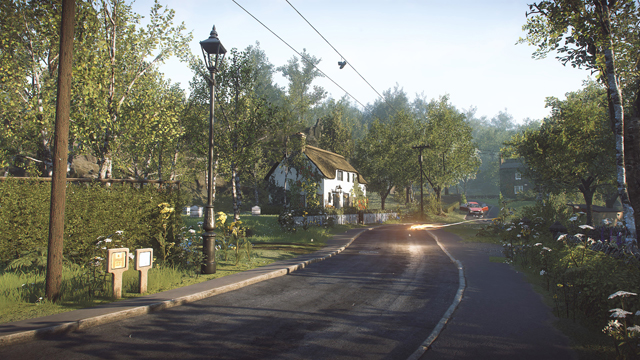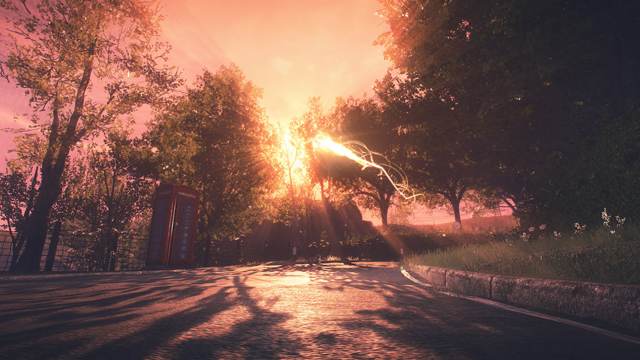Walk gingerly to your PS4 and play this.
From the developers of “walking simulator,” Dear Esther, and the “not exactly walking simulator,” Amnesia: A Machine for Pigs, comes a new “game” for “gamers” to “play” “exclusively” on their “Playstation 4” “video game” “consoles.” [This is "commentary." ~Ed. Nick] The Chinese Room brings you Everybody’s Gone to the Rapture this time around, and frankly, whatever manner of mental gymnastics you need to perform to accept it in this space, it’s a wonderful example of non-traditional storytelling in our favorite medium. It’s not without its kinks, but while watching the credits scroll at the end, I just felt in awe of what I experienced.
After a brief message from one of the protagonists, you are plopped in a quiet, remote village somewhere in the UK county of Shropshire. The tutorial phase is minimal, featuring very small and brief cues to tell you to hit X to open doors, switch on radios, and answer phones. Then, you are greeted by a mysterious light zipping about, which leads you to one more tutorial on how to deal with floating orbs of light by rotating your controller. After this, there is no more visible UI for the remainder of the game.
Also, these are your only abilities in the game. You cannot pick up objects or read books or letters beyond any visible text. Otherwise, you can walk and look around you. Actually, I was prepared to criticize the fact that you can only walk, and slowly at that, until I learned about and tested the existing sprint function today. (Contrary to the article, it’s not so much a run as it is power walking.) It’s not that walking is such a trial, but the game is designed with very open levels. With all that countryside, it’s prohibitive to explore if you know getting to and from a far off point takes excessive amounts of time. It may still do so in your opinion. I quickly got over it.
Utilizing your slow or slightly-less-slow pace to stop and smell the roses is not a total waste of your time too. The visuals in Shropshire are simply breathtaking, and practically every view is worth a screenshot, particularly as you approach the finale when lighting and visual effects become a bit more surreal. In fact, as the story progresses, even the most lifelike scenery feels more surreal as you try to process recent events.
Instead of forcing players to read excessively or removing control for cutscenes, EGTTP utilizes a different method of communicating its tale. Whining radios broadcasting strange numbers relay the scientific findings of one character, Kate, once their switches are toggled. Answering ringing phones allows you to hear private conversations between characters. And just walking into certain areas will cause sparkly silhouettes to perform past events in the space, lighting up as they speak or make noise. You never actually see the characters, but by the end, you’ll know and feel for all of them.
The aforementioned floating light orbs are similar in that they also play out dazzling vignettes from the village’s final days, but there are some key differences. They require player action in order to trigger, and they are required to complete a level. However, they mainly differ in execution. When one of these scenes is acted out, the brightly-lit sky is quickly replaced by a night sky filled with a glorious view of the stars. I would often position myself in such a way to get a view of both the specters speaking and the remarkable view as trails of light weave around me.
Although I found graphical touches like these compelling, it was the story and the superb voice-acting that made Everybody’s Gone to the Rapture absolutely engrossing. Right from the title and the first moments establishing that Shropshire and the people in it were under lockdown and quarantine with the mysterious light swirling about, it’s clear that something big went down over there. Yet it’s the small stories of the village’s residents, of their loves and losses, which made me want to find every scene and hear every phone call. These moments, which are not placed in chronological order, feel very personal and relatable, and much of the serious overarching plot both gives way to and is bolstered by a beautiful tale of coping. This from-the-ground-up approach resonates deeply with me.
Of course, I could leverage some criticisms in the game’s direction. The open-world-ish design is a cool approach to adventure games, which typically give you a clear idea of your next target. Where this falters, though, is in the fact that not every corner of each level is rewarding. While I don’t expect the game to devolve into a collect-athon, putting more scenes or more ways to learn about the characters could have gone a long way towards rewarding player time and action.
That said, the guiding light, if you will, can help make the experience more linear if you like, but you may miss some special moments along the way. Also, it occasionally acts like an overexcited puppy and either circles around until you make a move, or it might disappear completely while you’re off listening to a radio broadcast, leaving you a bit lost. Finally, there are TVs you can switch on and off, which display a corrupted broadcast, that serve no other particular purpose than to be weird. Like the radios and the phones, I think they could’ve been used in order to further the tale. I’m not a fan of letting a player test out function only to be let down every time.
That’s really it, and I’m not inclined to engage in conversation about what type of player will enjoy Everybody’s Gone to the Rapture. If you can let go of semantics and get involved in a story you don’t control directly, then there may be something for you. It’s a moving story told through gorgeous graphics, excellent voice acting, and a transcendent musical score that pleasures your ears during poignant moments. And yes, you basically just walk around much in the same way you can boil many games to just doing any number of repetitive actions. Give this a try. You may fall in love.
-
Beautiful graphics, especially during surreal moments
-
Excellent voice acting
-
Transcendent musical score complements emotional scenes
-
Well-written story that communicates a large event through smaller subplots
-
Novel method of storytelling using sparkling silhouettes to re-enact key scenes
-
Open-world approach to level design…
-
…which doesn’t always reward curious players
-
Sprint function not communicated at all, leaving players with very slow walking pace
-
Some wasted interactions with TVs
Everybody's Gone to Rapture
-
Everybody's Gone to Rapture #1
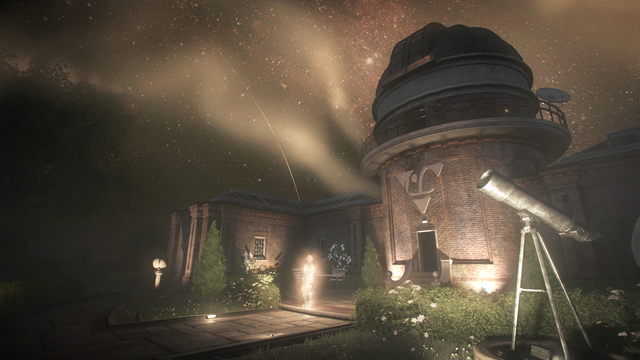
-
Everybody's Gone to Rapture #2

-
Everybody's Gone to Rapture #3
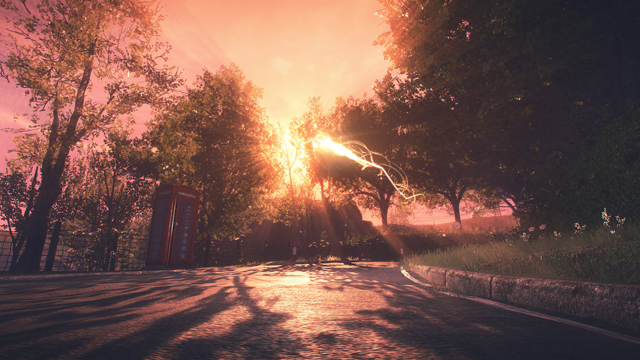
-
Everybody's Gone to Rapture #4
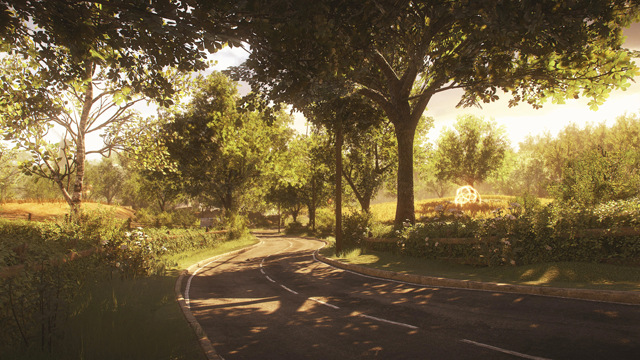
-
Everybody's Gone to Rapture #5
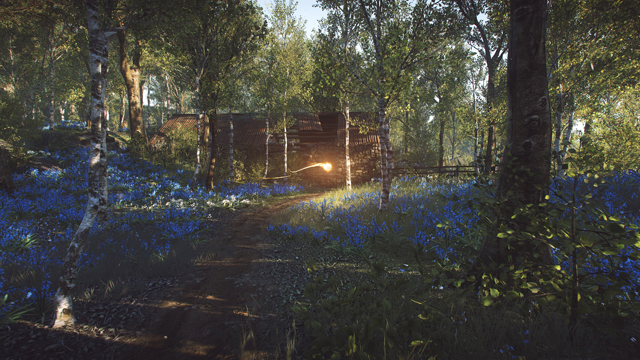
-
Everybody's Gone to Rapture #6
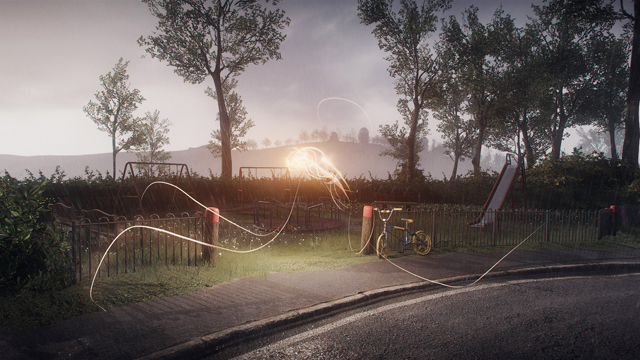
-
Everybody's Gone to Rapture #7
